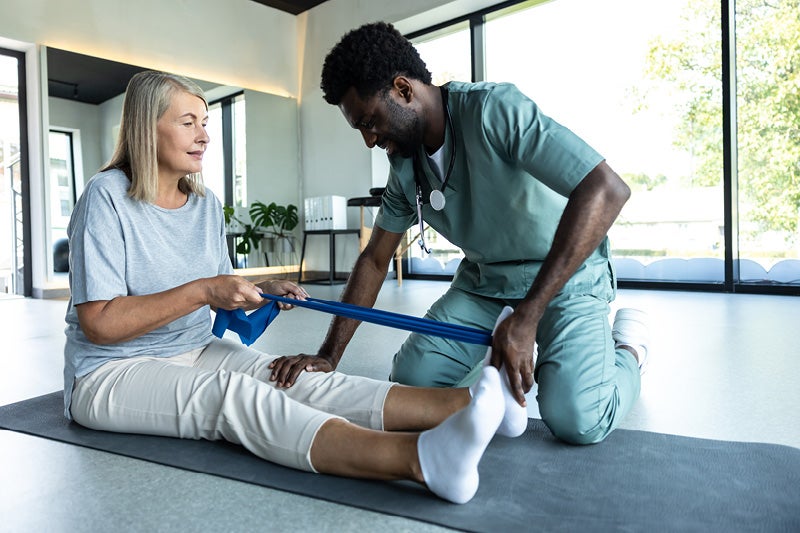Are your arms or legs swelling? You could have lymphedema.
December 31, 2024Categories: Wellness, Therapy and Rehabilitation

Lymphedema can cause swelling in your arms or legs because of fluid buildup in your lymphatic system.
The lymphatic system is part of your immune system, so it helps keep the correct amount of fluid coursing through your body, transfers nutrients to your body, fights germs and bacteria, and aids in separating waste. It also helps with bringing blood from your arms and legs back to your heart.
Lymph fluid travels throughout your body and contains proteins, salts, water and white blood cells. When lymph fluid is blocked from draining, it can cause swelling in your arms, legs, genitals, face, neck, chest wall and face. Most commonly, swelling occurs in your arms and legs.
- Skin tightness
- Pitting (dents appear in your skin when you press into it)
- Skin appearance is thicker
- Difficulty moving arms or legs because of heaviness
Causes of lymphedema
The cause of lymphedema is not always something you can control, but it’s good to know what the source could be.
- Genetics
- Cancer/cancer treatment
- Severe burns
- Injuries
- Poor blood flow in your legs
Lymphedema treatment
If your primary care provider diagnoses you with lymphedema, you can be referred to a certified lymphedema therapist (CLT) for treatment. These are physical therapists and occupational therapists with advanced education to treat lymphedema. During this time, your CLT can evaluate the area of lymphedema and discuss your concerns to determine the best course of treatment. Keep in mind, lymphedema is a chronic condition. There isn’t a treatment to completely resolve the issue, but therapy can help alleviate your symptoms. Treatment for lymphedema is called complete decongestive therapy and includes:
- Manual lymphatic drainage is a technique where a CLT gently massages the affected areas to encourage the lymph fluid to move.
- Compression therapy uses garments or wraps to help prevent the buildup of lymph fluid and reduce swelling.
- Exercise programs from CLTs will target lymphatic circulation to reduce swelling, enhance mobility and strengthen muscles.
- Self-care education teaches proper skincare, self-massage techniques and tips for managing lymphedema symptoms at home.
Benefits of complete decongestive therapy
Through therapy, you can reduce swelling and discomfort to restore your mobility and functionality. Their treatment plan can help prevent further complications like infections, increased swelling or wounds. Overall, these techniques can improve your quality of life.
Talk to your primary care provider about visiting a physical therapist or occupational therapist if you’re experiencing lymphedema.
This blog was medically reviewed by a MercyOne provider.
